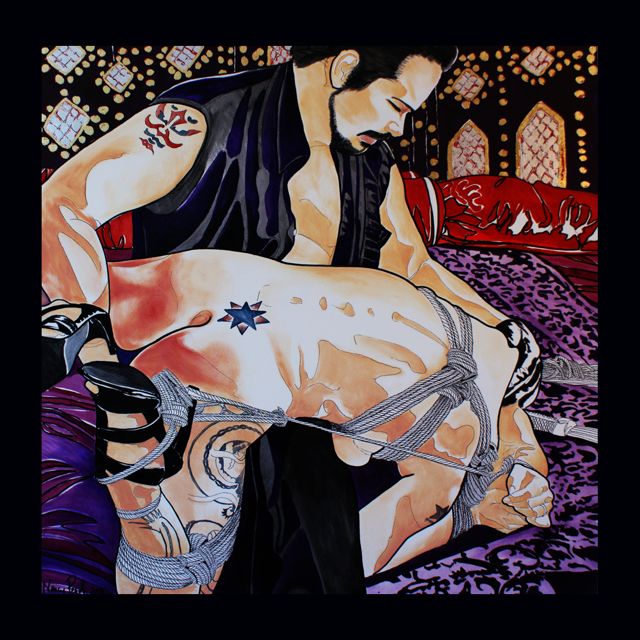“Zen? Why would you want to believe in Zen? They don’t believe in anything!“- My stepmother, circa 1985
“Surprisingly, the height of both the arousal and the meditative state seemed to come for both the top and the bottom when the rope was coming off – that is, in the negative space that was being created.” – Professor Greg, aka “Neuromancer”, reporting the findings of an EEG performed during an ichinawa session.
I’m an unashamed Japanophile. I have always enjoyed their culture vicariously, whether it’s fantasies of the 47 Ronin or just the strangeness of Hiro Dreams of Sushi. At one point in my life I was making a painful shift from creative artsy type to lean green killing machine, and it was at that time that I encountered Zen Buddhism – specifically the Rinzai and Soto varieties. I found much resonance in the latter, and it provided a path of sanity through assimilating the need to create with the ability to destroy and vice versa. Much later, as a rope bondage aficionado I have been through the cycles of worshipping everything Japanese to feeling I was not entitled to anything due to culture to finally realizing that it doesn’t really matter – it’s the rope that counts.
Except When It Doesn’t
In rope bondage, underneath the hot sex (or not) and the fine art (or not) and the centuries (or not) of tradition, there is something about the rope that simply speaks directly to a place of calm inside. To a place where somehow all the physical manifestations – the skin, the rope, the environment, the bodies and minds themselves – go away, and there is simply the action itself.
I realize that seems kind of strange to say. How can you have action without things doing the acting, without the things being acted upon? All I can say is that it doesn’t always happen, and it never happens for very long – but when it does, it is when I feel closest to understanding what they mean when the devout say “God”.



 Follow
Follow